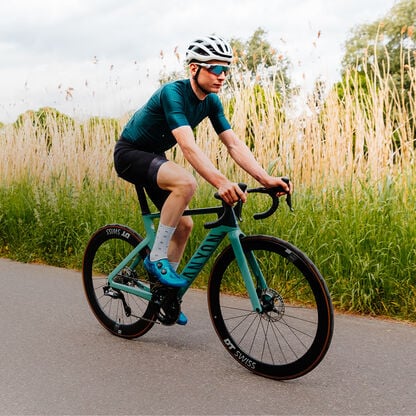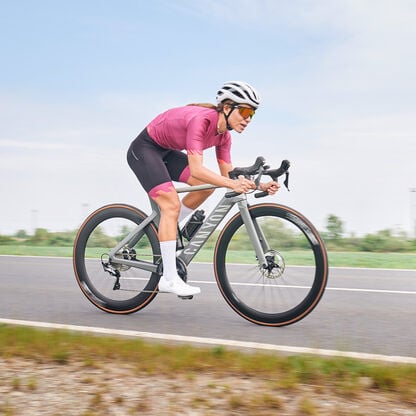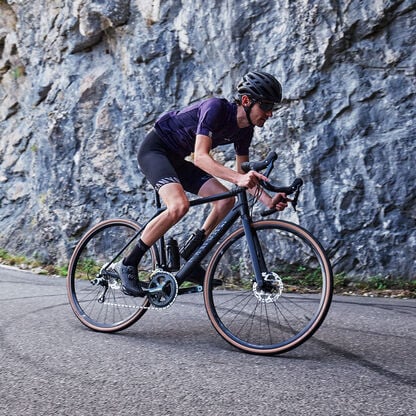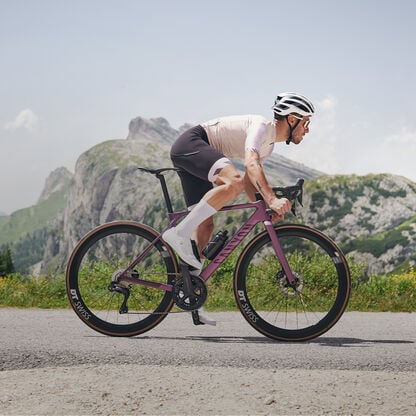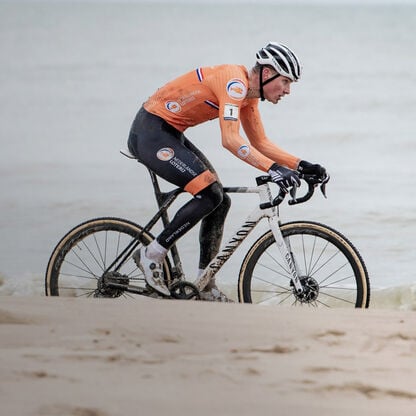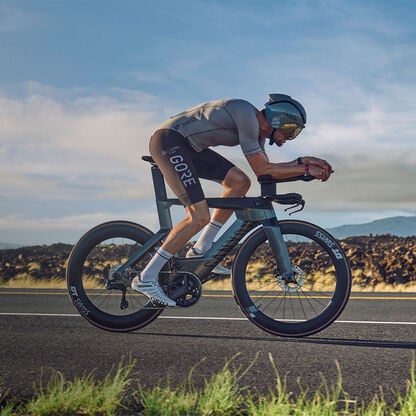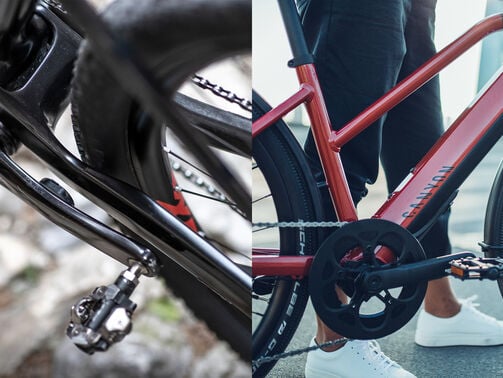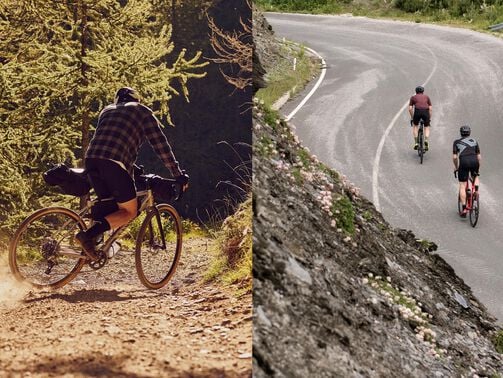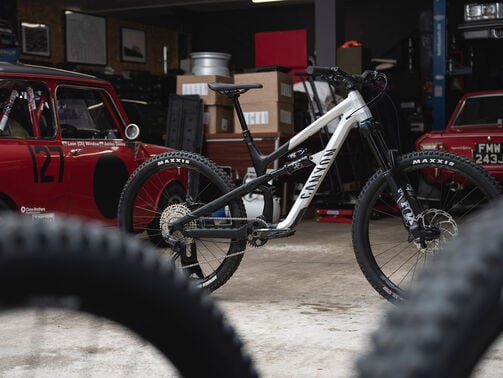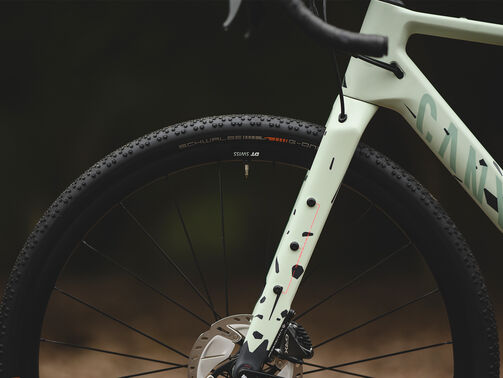Road bike tyre pressure: Tips for optimal performance and comfort
Getting the right pressure for road bike tyres is tricky but rewarding. In practice, it’s an incredibly impactful factor in how fast, comfortable and stable you feel on your road bike. Find the right road bike tyre pressure for you in our comprehensive guide.

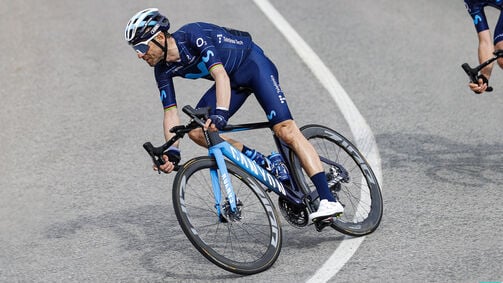
When you’re riding, the tyres are the only contact point between your bike and the ground. By pumping your road bike tyres to the right pressure, typically measured in either pounds-force per square inch (abbreviated to psi) or bar, you can get the ride feel, grip and speed you want.
Contents
What factors affect the correct road bike tyre pressure?
There’s no one-size-fits-all correct tyre pressure to suit all riders and situations. In general, the narrower a bicycle tyre is, the higher the pressure should be. However, pumping the pressure too high can have detrimental effects to performance and comfort, by reducing grip and increasing vibrations. There’s also a difference between the bike types and tyre psi favoured by a professional cyclist vs a regular person… and trying to emulate the pros by jacking up the pressure on your own road bike tyres can lead to unnecessarily uncomfortable riding.
Based on the assumption that you are riding 25mm tyres, we’ve put together a simple table to show what your recommended road bike tyre psi or bar should be. It’s organised by weight, as this is the single most important factor, however, there are a lot of other factors in play which you can learn more about later in the guide.
| Rider weight | Recommended pressure |
|---|---|
| ≤ 50kg / ≤ 110lb | 73psi / 5bar |
| 51-57kg / 112-126lb | 78psi / 5.4bar |
| 58-65kg / 128-143lb | 83psi / 5.7bar |
| 66-73kg / 145-161lb | 88psi / 6.1bar |
| 74-81kg / 163-179lb | 93psi / 6.4bar |
| 82-88kg / 181-194lb | 98psi / 6.8bar |
| ≥ 89kg / ≥ 196lb | 103psi / 7.1bar |
| ≥ 96kg / ≥ 212lb | 108psi / 7.4bar |
Now let’s look at some of those factors that impact optimal air pressure for road bike tyres.
Road surface
On a brand-new super-smooth road surface, a road bike with higher tyre pressure will generally roll faster. However, on rough roads that changes. If your road bike tyre pressure is too high, the tyre can’t absorb the jolts and vibrations from the uneven surface, affecting the bike’s ride quality, your comfort and how fast and far you can ultimately go.
As road bikes like the Canyon Endurace become ever more capable on rougher surfaces thanks to tubeless-ready setups and bigger tyre clearances, the temptation to mix in a little bit more bumpy stuff into your road ride becomes ever more alluring. If you do succumb to the call of the broken road, you can always let out a little bit of air from your tyres to help manage the extra surface chatter – and re-inflate with a hand pump once your back on the asphalt and headed for home.
When planning your route, always take into account the surfaces you will be riding on – this will let you adjust your bike tyre psi accordingly.
Overall system weight
The rider contributes the majority of the overall system weight. That means that you should base your pressure for road bike tyres on your weight, while also taking the weight of your setup into account. This is especially important in bikepacking, for example, where every gram is painstakingly considered and your extra luggage can increase the total system weight by several kilograms (For more detailed tips on gravel bike tire pressure, check out our guide on optimizing your setup). Without tweaking air pressure, the handling, comfort, and puncture resistance of your bike will suffer.
As a general rule, heavy riders should pump more air into their tyres than lighter ones and it’s a good idea to inflate the front wheel less than the rear wheel, because the rear wheel carries more weight. But if you’re adding any sort of load to your bike (for the aforementioned bikepacking, or to commute), you should also consider how that will impact weight distribution and tyre pressure. If, for example, you were to add a pair of front panniers with a laptop and spare change of clothes, that would necessitate increasing the tyre pressure up front to compensate.
Keep reading for a handy rule of thumb that relates to your weight and your ideal bike tyre psi.

Tyre width
Rather than just going ahead and adjusting your road bike tyre pressure based on guesswork, it helps to take a look at the sidewall of the tyre beforehand. The sidewall displays the standardised ETRTO tyre size as well as information on the recommended maximum and minimum tyre pressure. Too high a pressure makes riding uncomfortable, whereas too little pressure causes increased wear.
Compared to a touring bike with tyres between 37-52mm, road bike tyres are narrower and generate less drag. For decades, pro cyclists used tyres that were around 20mm wide. However in recent years, the advantages of extremely narrow tyres have been disproven. Nowadays, the trend is going towards wider tyres, with the most prevalent widths being 25 or 28mm. When you accelerate on a road bike, you can really feel the lightness of the tyres – their low rotating mass – compared to heavier MTB or touring bike tyres.
Generally speaking, pressure for road bike tyres that are wider (like the 25 & 28mm we just mentioned) should be set lower than the pressure in a pair of narrower tyres. This helps you to make full use of the improved rolling resistance and greater comfort afforded by the extra width.
Tyre construction
The material and construction both have an effect on optimal bike tyre psi. Racing tyres have delicate, finely constructed carcasses with a large number of thin cotton or nylon threads. These casings deform more easily at high pressures and have a smoother, faster ride feel. Other types of tyres, like winter tyres, have stiff, tough carcasses with a smaller number of thick nylon threads. In general, these types of tyre need less pressure.
Temperature and weather
The right pressure for road bike tyres is actually influenced by the climatic conditions you ride in.
In wet conditions you should lower your road bike’s tyre pressure by about 7psi (or 0.5bar) to increase the rolling surface area of your tyre and to maintain grip.
At high temperatures, your tyre pressure increases all by itself – especially if you’re riding carbon rims. To avoid the pressure building up to dangerously high levels, you should drop your pressures on hot days when you expect to be tackling long descents.

Why do tyres lose pressure?
Road bike tyre pressure decreases over time. This phenomenon is most noticeable when you haven’t ridden your bike for a few weeks and when you get ready to go out for a spin you find the tyres have softened significantly. But why does this happen? There are a few main factors, some of which you can mitigate, and some you simply have to live with.
Permeability of inner tubes
If you run inner tubes on your road bike, you will lose some air over time because the material your tubes are made with has a degree of natural permeability. This allows tiny molecules of air to seep through the material and escape. The two main materials used for inner tubes are butyl and latex. Latex tubes are lighter and racier, but leak more air more quickly. Butyl is heavier and better at holding onto the air inside, but still not perfect.
Valve leakage
Even a fully functional and well-sealed valve can leak a little bit of air if there are tiny imperfections in its manufacture. And then you have to consider all the ways a valve’s performance can be disrupted. Dust and debris can get lodged inside, the valve head can get bashed around and bent, or a valve core might not be fully tightened. All these things can cause the valve to leak and a gradual loss of pressure.
Temperature fluctuation
We talked already about the effect temperature can have on the pressure in your tyre when you’re out riding. That same concept holds true when the bike is stored. If you typically ride in the cold and store the bike somewhere warm, the repeated fluctuation in temperature will accelerate the loss of pressure. Keeping your bike propped against a radiator will also speed up the rate at which air escapes. Try to store your bike somewhere that stays a consistent temperature, or be prepared to top up your tyres more frequently.
How do I find the right road bike tyre pressure?
You can use a few different rough calculations to figure out your ideal tyre pressure setup. Once you have a baseline figure, you can play around with it to adapt it to the conditions on your local routes and cycling trips. And of course there’s always personal preference to consider.
This is how to find the right pressure on your road bike:
Rule of thumb: 10% of body weight
Your ideal tyre pressure for road bike tyres always depends on your body weight. A helpful baseline figure can be found by calculating 10% of your body weight in kilograms, and pumping your tyres to that number in bar. In other words, if you weigh 75kg, you should inflate the tyre to 7.5bar.
This method is fairly reliable, until you reach higher weights (over 85kg) when the amount of extra pressure you can get into your tyres diminishes and applying the 10% of body weight rule would lead to a level of pressure in bar in excess of your tyre manufacturer’s recommendation. Remember you can always check the sidewall of the tyre for the upper and lower limits of pressure.
If you wish to convert from bar to psi, the ratio is roughly 1:14.5. So 1bar = 14.5psi.
Rider weight and tyre width
It’s worth noting that the 10% body weight rule only really holds true for the more traditional narrow road bike tyre (23mm). As we said above, when you increase the width (25mm or 28mm), the pressure needs to be reduced a little bit, and the 10% body weight rule no longer works reliably.
You can get an even more accurate picture if you also take the width of the tyre into account as well as your weight. You should bear in mind that values can vary depending on the manufacturer and tyre model. If you weigh 70kg, you should choose 7.6bar for a 23mm wide tyre, 6.7bar for a 25mm tyre, and 5.7bar for 28mm. For every 10kg of body weight, adjust the tyre pressure up or down by 1%.
Puncture risks when running lower bike tyre psi
For more comfort, you can reduce your road bike tyre pressure. However, if the pressure is too low, you will stress the carcass and wear down the tread more. Riding with low bike tyre psi also increases the risk of getting a puncture when you ride over small obstacles. Kerbs, potholes, or small stones may damage the inner tube – known as a pinch flat, when the inner tube gets pinched between the rim and the external object – and a heavy impact might possibly damage the wheel rim too.

Why is the right pressure for road bike tyres so important?
A tyre’s rolling resistance is a critical factor, often even more significant than its weight or aerodynamics, in determining performance and efficiency. Rolling resistance is directly influenced by the air pressure in your tyres, making it essential to get the pressure just right for optimal results.
As it rolls over the ground, the tyre deforms slightly, generating friction against the asphalt. This results in an energy loss that the rider must make up for by pushing more power through the pedals. The faster you ride, the more rolling resistance is created, and the harder you have to pedal to overcome it.
With wider tyres, the contact area between the tyre and the road is short and wide, while narrow tyres create a long, narrow contact patch. Despite these differences in shape, the width of the tyre itself does not significantly impact rolling resistance when pressures are appropriately adjusted. This means that you can confidently use wider road bike tyres without compromising rolling resistance, allowing for greater comfort and better grip on various surfaces.
The right pressure balances performance, comfort, and safety. Over-inflated tyres can lead to a harsher ride, reduced traction, and a higher risk of losing control on rough surfaces. On the other hand, under-inflated tyres increase rolling resistance, reduce efficiency, and make the tyre more prone to pinch flats. For these reasons, understanding road bike tyre pressure and adjusting it to suit your weight, bike setup and riding conditions is crucial for a smooth, efficient ride.
What role does tyre type play in determining the right pressure?
The type of tyre you’re running can also be a factor in how much air you need to put in. There are three different types of road bike tyre, each with their own specific construction techniques, and subsequently their own pressure requirements.
Clinchers are the most common type of road bike tyre, and if you aren’t sure what type you have, they’re almost certainly clinchers. They feature two ‘beads’ that need to be seated into the rim of your wheel, with an inner tube inside to hold the air.
Tubular tyres are probably the rarest tyre type. The whole tyre is glued to the rim of the wheel, making them tricky and time consuming to repair at the roadside. However, tubulars are very lightweight with excellent rolling resistance, making them the favoured tyre for professional road cycling.
Finally you have tubeless, a system where the tyre is filled with sealant, which rushes to any punctures you might get and closes them up for you. These tyres don’t require an inner tube, with the sealant forming a seal against the wheel rim to keep the air inside instead (Discover when and how to change your road bike tyres in our comprehensive guide.).
Let’s look a little deeper at each of the options.
| Pros | Cons | |
|---|---|---|
| Clincher | - Widely available and easy to replace. | - Prone to pinch flats. |
| - Compatible with a wide range of wheels. | - Inner tubes can puncture easily. | |
| - Simple installation and maintenance. | - Higher rolling resistance compared to tubeless or tubular. | |
| - Typically more affordable. | - Limited ability to run low pressures. | |
| Tubular | - Lightweight and excellent rolling resistance. | - Difficult and time-consuming to repair. |
| - Can be ridden flat in emergencies. | - Special glue/tape required for mounting. | |
| - Preferred for professional racing. | - Expensive and less common. | |
| - Secure attachment to the rim. | - Not ideal for casual or long-distance riders due to repair difficulty. | |
| Tubeless | - Lower rolling resistance than clinchers. | - Requires compatible wheels and tires. |
| - No inner tube reduces pinch flats. | - More complex initial setup. | |
| - Allows for lower pressures, improving comfort and grip. | - Sealant needs periodic replacement. | |
| - Self-sealing properties for small punctures. | - Messier to repair punctures compared to clinchers. |
Tools and spare parts for keeping your tyres pumped up
To maintain your bike’s tyre pressure, you need these tools and spare parts:
- Which pump? To set the air pressure for road bike tyres as precisely as possible, you should choose a floor pump. The pressure display lets you inflate your tyres with absolute precision. Hand pumps are slower and take more physical effort to use – but they’re still an absolute essential when you’re out on the road.
- Digital pressure gauge. If you want to determine the exact road bike tyre pressure, you need a pump with a digital pressure gauge. Alternatively, you can use a digital air pressure gauge, a standalone tool that just tells you the pressure.
- Valves and valve adapters. When buying a pump, make sure it is compatible with your valves, or use a valve adapter if needed. Most road bike inner tubes have Presta valves (also known as French or Sclaverand valves). This type of valve can tolerate higher pressures than traditional Dunlop valves or Schrader valves. The narrow design is ideal for narrow road bike rims. Presta valves are more susceptible to bending than other types of valves due to their delicate construction, so when you’re pumping them up make sure you put the pump head on straight and remove it carefully. Discover more about tyre valves here!
- Patching a flat. To get back riding again fast when you have a flat, it’s a good idea to keep patches, inner tubes and spare tyres at hand. The older the tyre, the more susceptible it is to punctures. You can use a puncture repair kit to patch small holes in the tube and reuse them.
To wrap it up, maintaining the correct road bike tyre pressure is key to optimizing performance, comfort, and safety. Adjusting pressure based on your weight, riding style, and terrain ensures better handling and reduces the risk of punctures. Regularly checking your tyre pressure enhances your ride, no matter the conditions. Did you know that the right tyre pressure also affects your e-bike's range? Check our guide for the correct e-bike pressure to maximize performance and efficiency.
Discover our Road Bikes
Did this article help?
Thank you for your feedback
